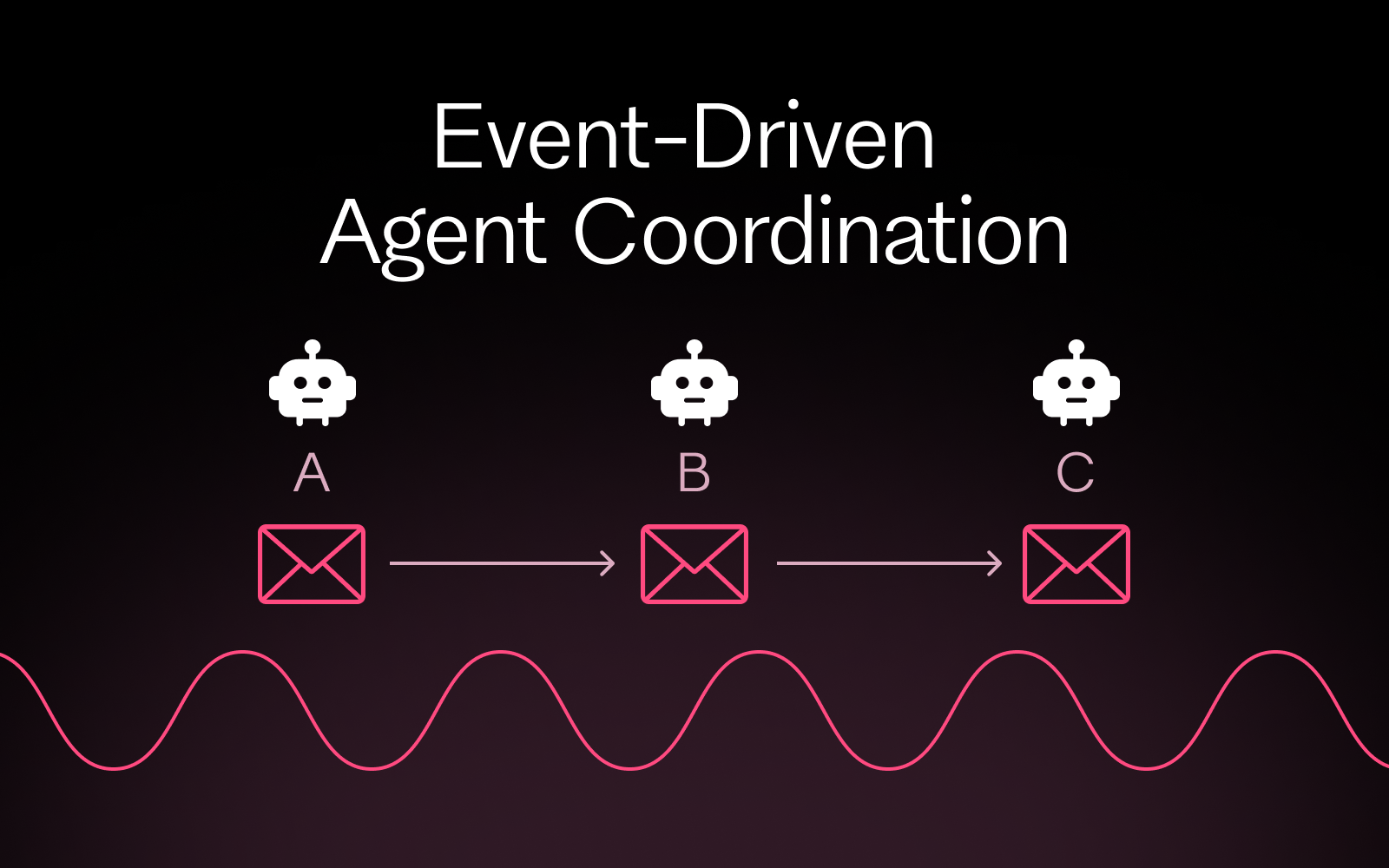Event-Driven Agent Coordination with KurrentDB: Leveraging Event Sourcing for Multi-Step Workflows


The rise of AI agents has brought new challenges to software architecture. As organizations deploy multiple specialized agents to handle complex, multi-step workflows, the question of coordination becomes critical: How do you coordinate agents effectively while maintaining visibility, auditability and scalability?
Traditional approaches often involve complex orchestration frameworks, message brokers and custom coordination layers. While dedicated orchestration systems like Temporal and Airflow excel at workflow management, there’s an emerging pattern: using event sourcing databases as a foundation for agent coordination.
Enter KurrentDB: a stream-based database that provides the event sourcing and pub-sub foundations needed for sophisticated agent workflows, potentially reducing the need for additional messaging infrastructure in many scenarios.
The agent coordination challenge
Modern agent systems face several coordination challenges:
- Coordination complexity: Agents need to work together in sequences, with outputs from one agent triggering actions in others. Conventional approaches require explicit workflow definitions and coordination mechanisms.
- State management: Tracking the progress of multi-step workflows across multiple agents becomes complex, especially when failures occur or rollbacks are needed.
- Auditability: In regulated industries, every decision and action must be traceable. Traditional systems often lack comprehensive audit trails of agent interactions.
Event sourcing meets pub-sub with KurrentDB
KurrentDB addresses these challenges through a unique combination of event sourcing and using Persistent Subscriptions (publish-subscribe capabilities) built directly into the database. This approach differs from dedicated orchestration platforms by making the database itself the coordination mechanism.
At its core, KurrentDB is a stream-based database where all changes are captured as immutable events appended to streams. Instead of storing the current state, you store the sequence of events that led to that state. This approach provides:
- Complete history: Every action and decision is preserved in 256MB chunk-based storage with global ordering
- Natural audit trail: Compliance and regulatory requirements are met automatically
- Reproducibility: You can replay events to understand exactly what happened
Built-in pub-sub coordination using persistent subscriptions
KurrentDB’s pub-sub capability eliminates the need for external message brokers in many scenarios. Agents subscribe to specific streams or stream categories, and when events are appended, they’re automatically routed to the appropriate agents through:
- Persistent subscriptions: Server-maintained with competing consumers and load balancing
- Catch-up subscriptions: Client-driven with positioning and filtering capabilities
- At-least-once delivery: Guarantees with acknowledgment/retry mechanisms
This creates coordination where agents discover work through event subscriptions, no central orchestrator is needed for basic workflows, coordination happens naturally through event flows and new agents can be added by simply subscribing to relevant streams.
Event-driven agent workflows with KurrentDB
Let’s examine how this works in practice. With pub-sub consumers can subscribe to streams in the database. The events are then dispatched to them based on the chosen consumer strategy. The consumers send back an ACK or NACK to let the Persistent Subscription service know what to do next.
They can NACK if something went wrong. For example:
- It is too late to handle this event (Timeout)
- The agent to which this was dispatched is busy and this need to be handled by another agent (NACK with Retry)
- The event needs to be parked and analyzed later (NACK with Park)

The KurrentDB approach
Here is a sample of what KurrentDB does. Key benefits include:
Reduced infrastructure complexity: While agent coordination often requires multiple components like message brokers (RabbitMQ, Apache Kafka) and workflow engines (Temporal, Airflow), KurrentDB provides event storage and streaming capabilities natively. This can reduce operational complexity in scenarios where the built-in capabilities meet requirements, though complex orchestration may still benefit from dedicated workflow engines.
Natural audit trails: Every step is captured as an immutable event (i.e., a complete and explainable trail of events that can be replayed). This creates comprehensive audit trails that support regulatory requirements like SOC 2 Type 2 and ISO 27001:2013 compliance.
KurrentDB provides a solid foundation for event-driven agent coordination by combining event sourcing with native pub-sub capabilities. It offers a compelling approach for organizations that can leverage its event-native architecture.
The database’s strength lies in providing immutable audit trails, natural agent coordination through event streams and simplified infrastructure for event-driven workflows. It works particularly well when your agent workflows naturally align with event-driven patterns and when you value the audit, replay and consistency guarantees that come with event sourcing.
Whether you’re building logistics systems or developing AI-powered workflows, KurrentDB offers a mature, well-engineered foundation that can grow with your agent coordination needs, provided they fit within its architectural paradigms and scaling characteristics.
